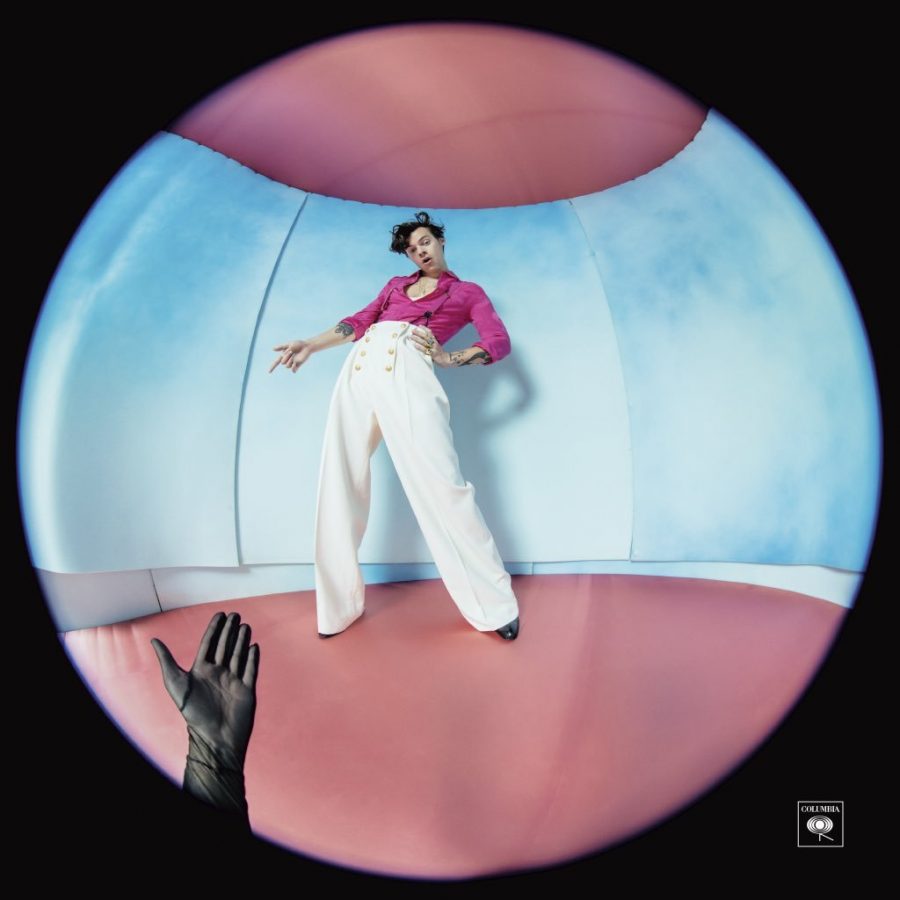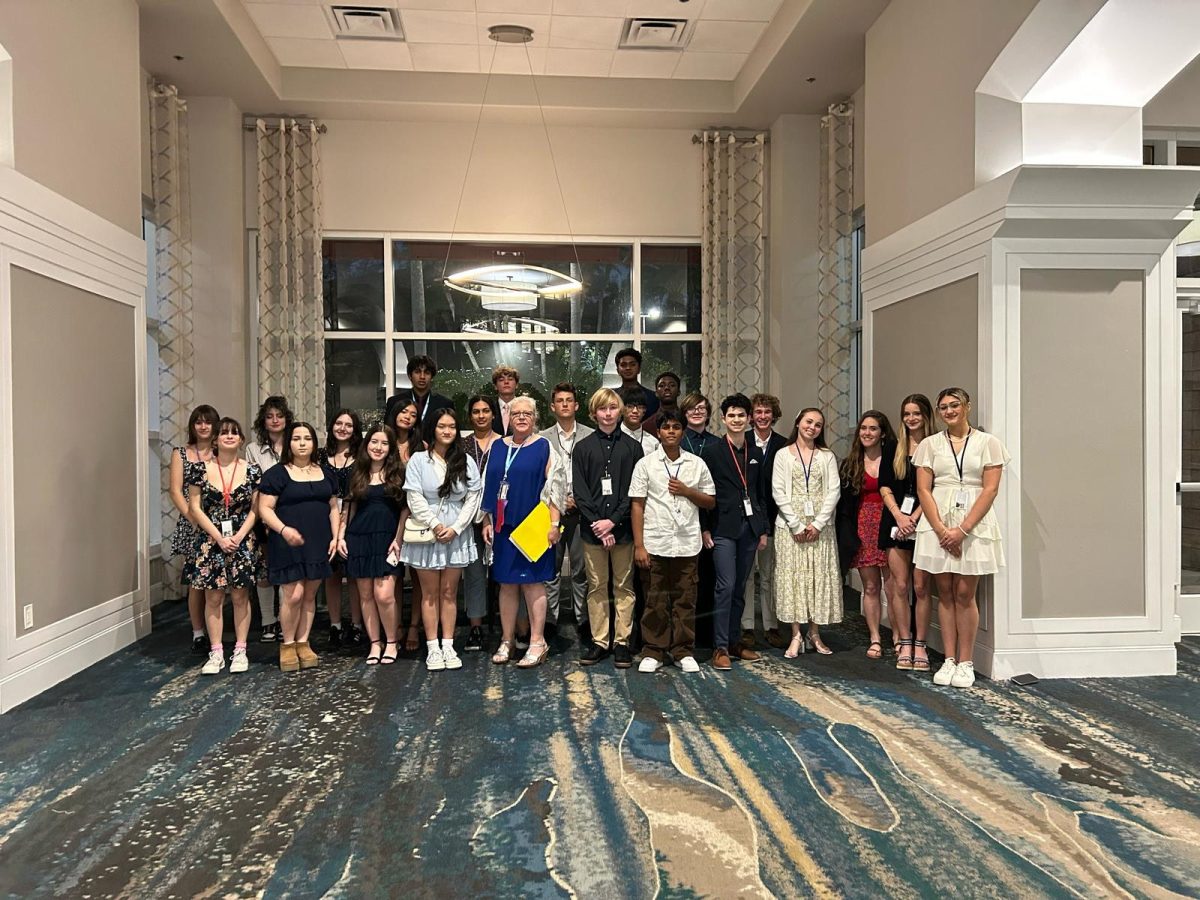Review: Harry Styles just wants to be known
Released on Dec. 13, Fine Line explores identity and what it means to be Harry Styles
Photo Fair use
Harry Styles’ Fine Line album cover, shot from a fish-eye view.
December 14, 2019
There is quite frankly nothing more daunting and inescapable than figuring out who you are, but Harry Styles conquers that fear with an entire album, Fine Line. Embedded in each part of the album, whether it’s the explosive first single “Light’s Up” or the opener “Golden,” Styles is screaming to be known and to be understood.
With his debut album Harry Styles, it felt like there was always something lurking just behind the scenes, hidden beneath the lyrics, but Fine Line is full–there’s no setback. Not in the lyrics, not in the sound and not in his voice. The entire album feels like a midnight conversation with a friend who you thought you once knew and are now rediscovering.
Fine Line is the kind of album where each listen feels new. There’s no boxing Styles in, he allows each song to be its own production, its own show. There’s trumpets, there’s psychedelic guitar solos, there’s operatic background singers. Each time I catch another part, I feel like I’m part of the club, like Styles is shooting me the world’s first sonic wink.
To focus on the sound, Styles has grown far from the man who was so attached to his acoustic guitar and piano. “Canyon Moon” is filled with plucky-American guitar and “To Be So Lonely” is composed on a twangy guitalele, a ukulele with six strings. He punctuates guitar-solos with a wet gasp on “Sunflower, Vol.6,” sounding like a man who has just come up for air. Undeniably, no one but Styles could have created Fine Line, which is exactly his point.
In his efforts to be known, Styles paints a picture the best way he knows how–lyrics. Through the hyper-specificity of “Strawberry lipstick state of mind” of “Adore You” and “Loving is the antidote” of “Golden,” Styles guides the listener through his exact memory while they just have to stand and admire the view. Each analytical song is affectionate and teasing–he’s looking himself in the mirror and seeing not a stranger to avoid, but a human with thoughts and emotions just waiting to be let out.
While Harry Styles was pure melancholy, Fine Line straddles the “fine line” between elation and despair; each sad song acknowledges that the past was once sweet and each happy song acknowledges that there is sadness to come. Even though Styles is just admitting that life can contain multitudes, which is something everyone realizes sooner or later, it feels like he’s revealing some ancient secret, one that now only he and I share.
Fine Line ends with the six minute titular track and an angelic crescendo of the lyrics “We’ll be alright.” Amidst an album of showy instruments and complicated metaphors, the simplicity of “Fine Line” reveals more about Styles and his ideals than his motto (and song) “Treat People With Kindness” ever could. Styles, when stripped of his complicated reputation and flashy clothes, is a man who believes that life will be okay. And he wants the world to believe that too.












